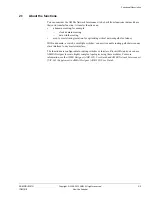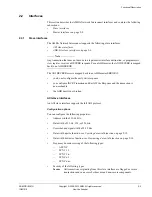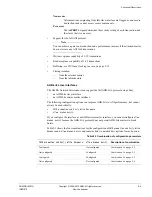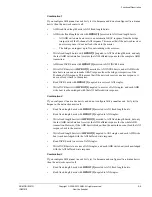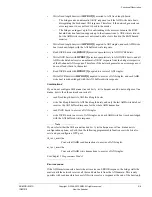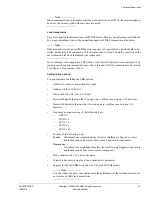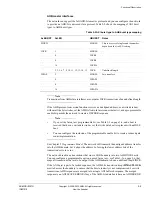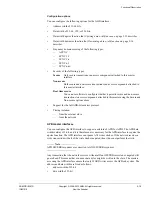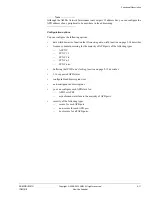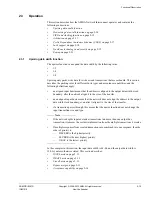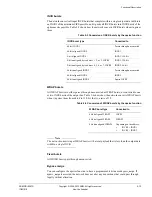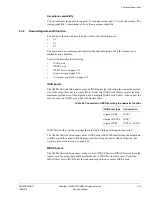
Introduction
ARM DDI 0397G
Copyright © 2006-2010 ARM. All rights reserved.
1-5
ID031010
Non-Confidential
1.4
Product revisions
This section describes differences in functionality between product revisions of the AMBA
Network Interconnect (NIC-301):
r0p0-r1p0
Contains the following differences in functionality:
•
support for 128-bit data width on AXI and all AHB variant interfaces
•
support for n-bit addressing on AXI and all AHB variant interfaces, where
n is 32-64 bit inclusive
•
the decode register is a slave interface property instead of a global property
•
single-slave-per-ID
Cyclic Dependency Avoidance Scheme
(CDAS)
•
ID register and configuration data
•
use of updated synchronous bridges
•
use of an AHB to AXI bridge optimized for accessing memory where
appropriate.
r1p0-r1p1
Contains the following differences in functionality:
•
Separation of arbitration of AW and AR channels so that a slave can accept
transactions from two different masters simultaneously.
•
Changes to the way that the AMBA Network Interconnect handles
LOCKed transactions.
•
Configurable arbitration schemes, that can be:
—
programmable
Least Recently Granted
(LRG), the scheme present in
r1p0
—
a non-programmable
Round-Robin
(RR) scheme.
•
You can select and configure arbitration schemes for each master interface.
•
The APB programming interface enables you to program and interrogate
the new, separate arbitration schemes.
•
The AHB to AXI bridge is optimized for accessing memory is updated with
performance enhancements, and to fix a defect.
•
The way arbitration schemes are described has changed to enable you to
select and configure arbitration schemes.
•
The
Quality of Service
(QoS) tidemark value now represents the maximum
permitted number of active transactions before the QoS mechanism is
activated, instead of the minimum number of unused slots before the
mechanism is activated. This means the combined acceptance capability
attribute of a master interface is no longer required.
r1p1-r1p2
Contains the following differences in functionality:
•
Updates to the example synthesis scripts.
•
Addition of a programmable version of the fixed round-robin arbitration
scheme.
•
Shortening some long paths to improve synthesis performance.
•
A change to the way register slices are instantiated. This makes it easier to
use them to resolve timing issues during synthesis.
•
The choice of CDAS is independent for reads and writes.
•
Additional configuration option for the single-slave-per-ID CDAS that
permits only a single data-active write transaction to be in progress.

















